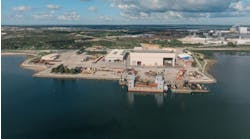Offshore staff
EDINBURGH,UK – High oil prices and fiscal engagement between the UK government have had a beneficial impact on offshore activity, according to Wood Mackenzie’s latest UK upstream review.
However, optimism generated by high levels of capital investment and merger and acquisitions (M&A) activity has been offset by poor exploration and production performance last year, the analysts claim.
Although development activity is expected to remain strong through 2015, low levels of exploration success raise concerns about UK projects in the longer term.
Lindsay Wexelstein, UK upstream lead analyst, said: “Over $60 billion (£39 million) of capital investment is expected to be spent in the UK between 2012 and 2015, largely due to new field developments and incremental projects on existing fields. 2012 spend was at levels last experienced in the mid-1970s, in 2012 real terms. This was partly driven by spend on more technically challenging projects and cost inflation.”
She cautioned, however, that “2012 was another disappointing year for exploration: Although 66 E&A [exploration and appraisal] wells were spudded in 2012, a 40% increase on 2011, only two discoveries were made – Carnaby andCormorant East – with combined reserves of 20 MMboe. The exploration success rate stands at an all-time low.
“The frontier west of Shetlands region is still expected to provide the best opportunity for material discoveries and although there was no announced exploration success in 2012, interest in the area remains high. However, the challenging and high-cost environment means that only those with the expertise and sufficient funding are able to drill. There are four prospects to watch which have results expected in 2013: North Uist, Spinnaker, Glenrothes, and Cragganmore.”
In 2012 the government introduced fiscal incentives to assist development of commercially marginal fields, as well as committing to improve certainty around the rate oftax relief that will be available for future abandonment spending. These measures, according to Wood Mackenzie, lifted investment after the unexpected supplementary charge tax increase in 2011.
M&A surged, according to Wexelstein: “The $9.3 billion traded in UK-focused deals during 2012 was the highest level since 2002. Early signs are that the promise of certainty ontax relief available for decommissioning spend is having a positive impact on the late life asset market.”
Nine new UK fields came onstream last year, with total recoverable reserves of 153 MMboe. Wood Mackenzie expects 21 fields to come online this year with combined reserves of 638 MMboe, including larger gas projects, such as Breagh and Jasmine in theNorth Sea. However, some of these projects may be delayed due to demand for services in a tight market.
Wexelstein concluded: “Despite poor E&A performance, the success of the27th licensing round demonstrates the continued attractiveness of the UK as a place to explore. If all offered blocks are awarded, the round would be as successful as the 26th round. But, with only 18 firm wells committed within the next four years, the round is not expected to significantly boost E&A drilling in the medium term.”
1/9/2013


